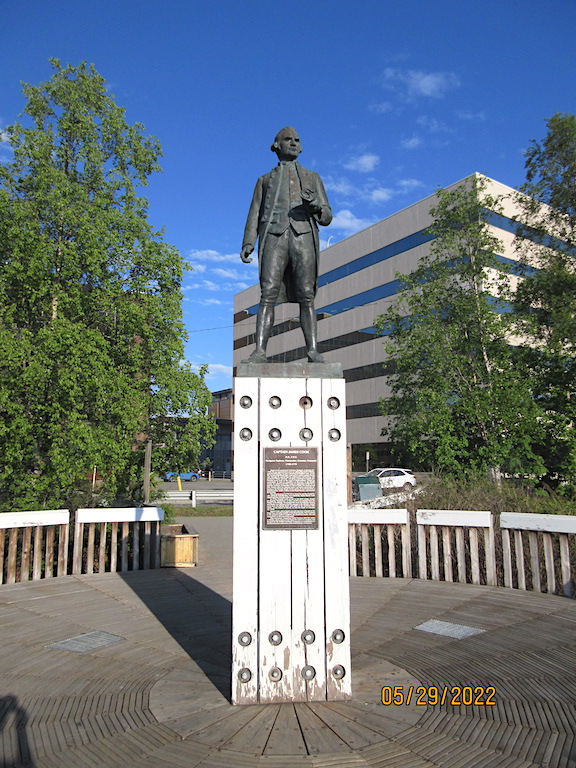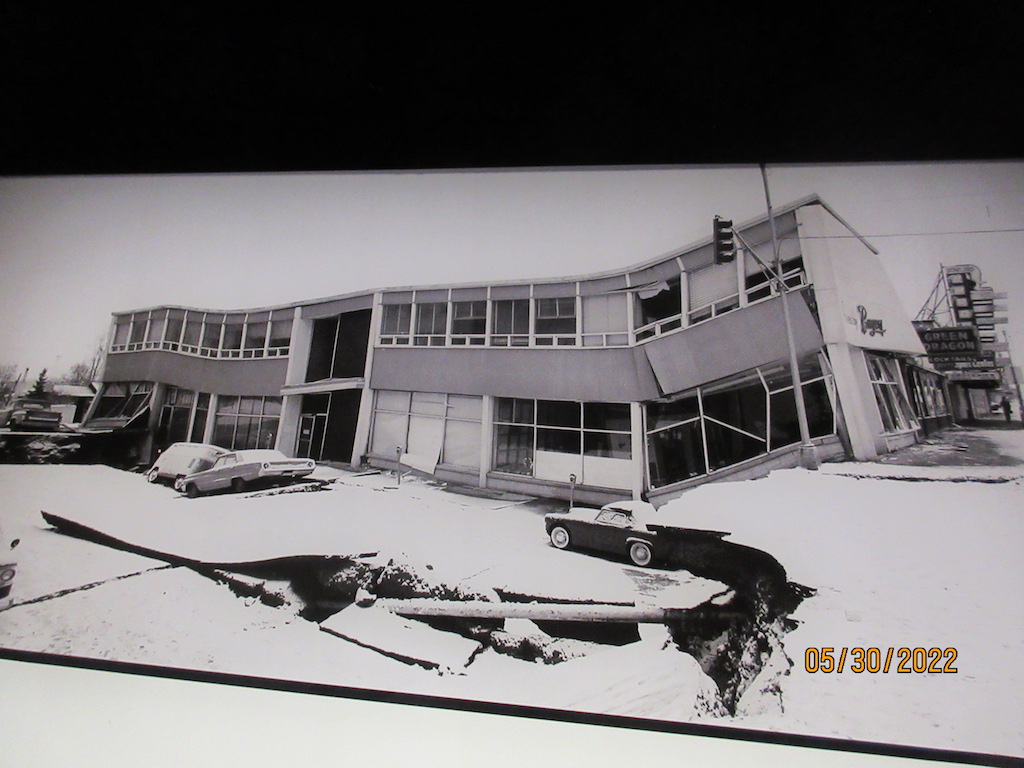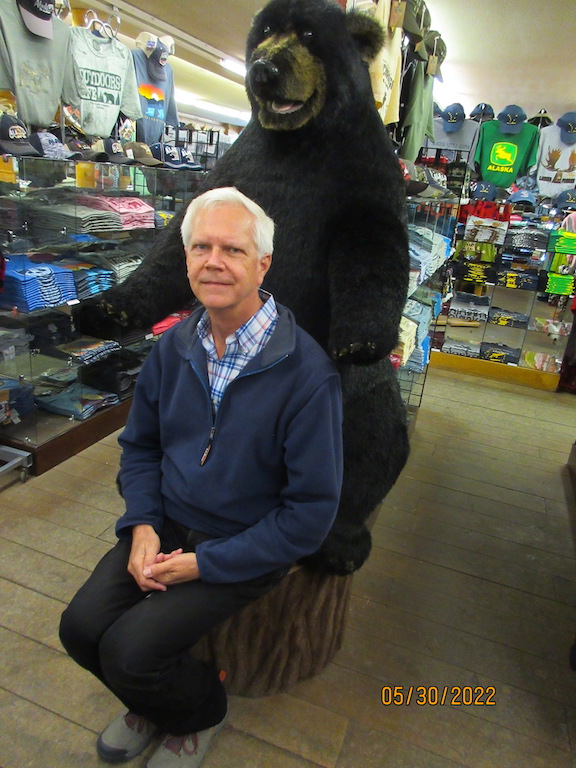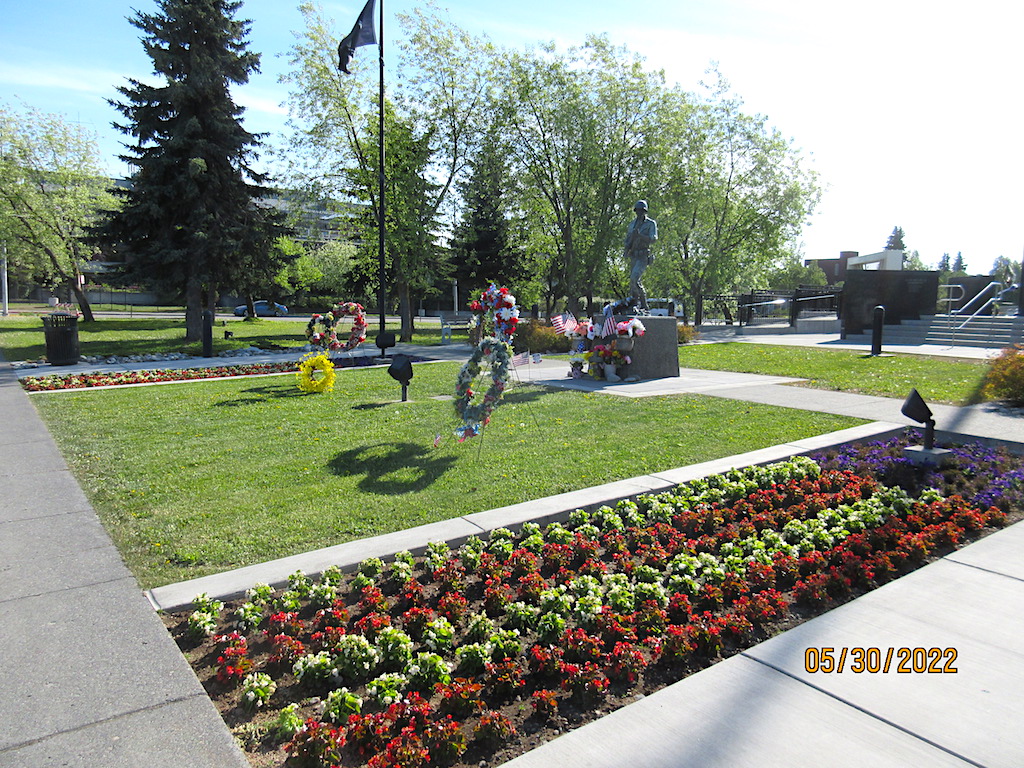





This was the Memorial Day holiday across America and in Anchorage there was a fairly large celebration going on in the Delaney Park where there is a WWII Soldier Statue. Once again, the weather was spectacular with sunshine and temperatures ranging from about 55 to 70 degrees.
In the 19th century, Russia had a strong presence in south-central Alaska. In 1867, U.S. Secretary of State William H. Seward brokered a deal to purchase Alaska from Imperial Russia for just $7.2 million dollars. In 1888 gold was discovered just south of Anchorage which lead to the development of many small towns in the area. In 1912 Alaska became an organized incorporated United States territory.
We boarded the Anchorage Trolley Tour’s red trolley this morning for a live narrated 15-mile round trip tour of Anchorage. The tour guide gave lots of information about the area including the location, the annual snowfall of 75 inches, highest recorded temperature of 90 degrees, etc. We heard about James Cook exploring and mapping the area as he searched for the northwest passage, the fishing industry and the importance of tourism to the economy. We toured downtown, as well as many residential neighborhoods where there are all styles of homes built including those built underground for its insulating factors. We toured the area around the airport where there are more than a thousand private airplanes, many of which are float planes and sea planes that can take off and land on water, land or ice. We stopped at earthquake park where the most homes were destroyed in the 1964 earthquake and the uneven land still remains from the sinking of the soil that enveloped homes. Even in the central downtown, along 4th Avenue, the earth sunk more than twelve feet destroying many businesses.
The Anchorage population of about 300,000 is quite spread out and that does not include the moose and bear population. The large moose are supposedly a common sighting in town but they eluded us on our visit. The neighborhoods we visited were well kept with lots of lush trees and vegetation as you might imagine when you have lots of rain and water. All around the city we saw snow peaked mountains making for a picturesque backdrop to the city. The downtown area has a wide variety of buildings, some from before the earthquake and then those built or rebuilt after 1964. There is also some new construction going on. We saw quite a lot of vacant store fronts, we assume that some were unable to survive the pandemic, and we saw a good number of homeless people, mostly younger looking men. Not my idea of a climate in which to be homeless, but there are homeless in Anchorage.
After our trolley tour we walked to the Anchorage Museum where we enjoyed much more information on the history, culture, science and art of Alaska and the north. The museum is very extensive on four floors of a modern mirrored glass exterior building. They have an extensive collection of items from the Alaskan native communities including oral histories, clothing, tools, baskets, weapons, headdresses and so much more. They have large galleries of art from landscapes to contemporary art, sculpture and jewelry.
After being exhausted by the walking and the museum, we retreated to our hotel for a rest before heading out for a bite to eat. We had an early dinner at the Glacier Brewing Company across the street from our hotel. Seafood pasta and fish and chips. After dinner we walked to the WWII Memorial for a closer up look that we had from the trolley this morning.
